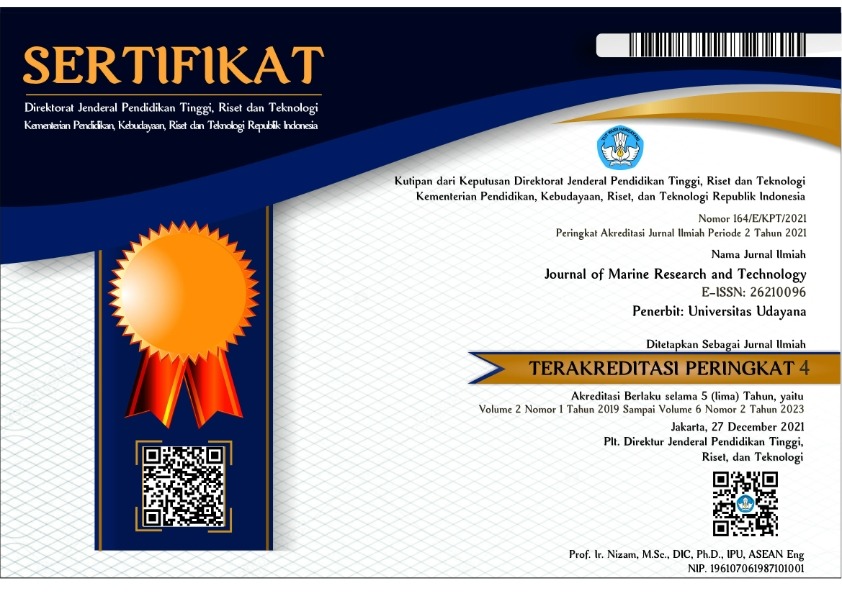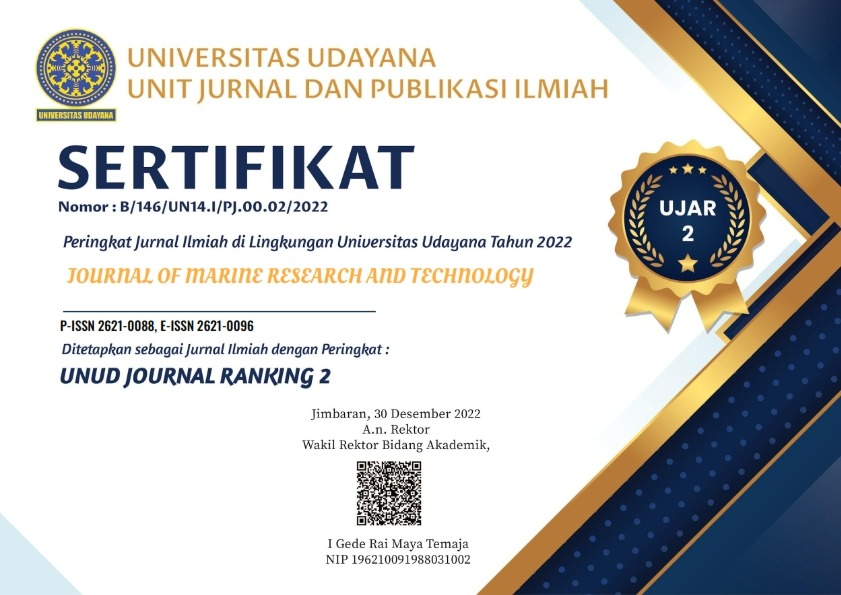Author Instructions
Author Instructions
1. Manuscripts formatting
Please make sure before submitting that: The manuscript is proofread several times by the author(s); and is criticized by some colleagues. The language is revised by a professional science editor or a native English speaker (for Abstract). The manuscript's structure follows the guidelines (sections, references, quality of the figures, etc.). The Abstract provides a clear view of the paper's content and attracts potential citers.
All manuscripts must be written in clear and grammatically correct Bahasa Indonesia, and abstracts should be written in Bahasa Indonesia and English
The manuscript should be as short as possible, with an abstract of about 250 words. The original research manuscript should be written in no more than 8,000 words (including tables and pictures) or proportional to articles in this publication number. The review articles will be accommodated, while short communication should be written at least 2,000 words, except for pre-study (can be longer) (excl., abstract, tables, figures, references). For a research paper, the manuscript should be arranged in the following sections and appear in order: Title, Abstract; Keywords set A to Z), Introduction, Materials and Methods, Results and Discussion; conclusion, Acknowledgements, and References. For reviews and short communications, it is accommodated.
The manuscript is typed on white paper of A4 (210x297 mm2) size, in a single column, single space, 12-point (12 pt) Times New Roman font. It has to use line number, "Normal" style for text, and "Heading" style for headings. The margin text is 3 cm from the top, 2,54 cm from the bottom, and 2.5 cm from the left and right. Word processing programs or additional software can be used; however, it must be PC-compatible and Microsoft Word-based (.doc or .docx).
Scientific names of species (incl. subspecies, variety, etc.) should be written in italics, except for italic sentences. Scientific names (genera, species, author) and cultivars or strains should be mentioned completely for the first time mentioning it in the body text, especially for taxonomic manuscripts. The Name of genera can be shortened after the first mention, except for generating confusion. Name of the author can be eliminated after the first mention. For example, Rhizopus oryzae L. UICC 524, from now on,r can be written as R. oryzae UICC 524. Using trivial names should be avoided, otherwise generating confusion.
Metric measurement use IS denomination, and usage of other systems should follow the equivalent value with the denomination of IS first mentioned. Abbreviations set off, like g, mg, mL, etc., do not follow by a dot. Minus index (m-2, L-1, h-1) suggested being used, except in things like "per-plant" or "per-plo.".
Equation of mathematics cannot always be written down in one column with text; in that case, it can be written separately. Numbers one to ten are expressed with words, except if it relates to measurement, while values above them are written in number, except in early sentences. The fraction should be expressed in decimal. In the text, it should be used "%" rather than "percent.". Avoid expressing ideas with complicated sentences and vocabulary, and use effective sentences.
2. Standard section The article's title should be written in compact, clear, and informative sentences, preferably not more than 20 words. The Name of the author(s) should be written entirely, especially for the first and last names. Name and institution address should also be written entirely with street name and number (location), postal code, telephone number, facsimile number, and email address for the Corresponding Author. The mention of "graduate program," "undergraduate program," "post-graduate program,", "master program," or "doctoral program" should be avoided in the Name of the institution. A manuscript written by a group, author for correspondence and address is required. The title page (first page) should include the title of the article, Full Name (s), institution(s), and address(es) of the author(s); the corresponding author's detailed postage and email address; and phone numbers.
- Abstract concise Abstract is required (about 250 words). The Abstract should be informative and state briefly the research's aim, principal results, and significant conclusions. An abstract is often presented separately from the article; thus, it must be able to stand alone (completely self-explanatory). References should not be cited; if essential, cite the author(s) and year(s). Abbreviations should be avoided, but they must be defined at their first mention if necessary.
- Keywords are about five words, covering scientific and local names (if any), research themes, and unique methods used and sorted from A to Z.
- Abbreviations(if any): All important abbreviations must be defined at their first mention there. Ensure consistency of abbreviations throughout the article.
- An introduction is about 400-600 words, covering the research aims and providing an adequate background, avoiding a detailed literature survey or a summary of the results. Indicate the aims of the research in the last paragraph. The introduction also gives the rationale and objectives of the reported study and their relationship to earlier work in the field.
- Materials and Methods Materials and methods section should emphasize the study site area, research procedures, and data analysis. In this section, the author(s) should provide sufficient information to allow another qualified researcher to repeat the experiments described in the paper.
- Results and Discussion should be written as a series of connecting sentences; however, manuscripts with long discussions should be divided into subtitles. A thorough discussion representing the causal effect mainly explains why and how the results of the research were taken place and do not only re-express the mentioned results in the form of sentences. A concluding sentence should be given at the end of the discussion. Conclusions must be well stated and summarize the significant finding and contributions to existing knowledge. Acknowledgments are expressed briefly; all sources of institutional, private, and corporate financial support for the work must be fully acknowledged, and any potential conflicts of interest are noted.
- References are dominantly from primary resources such as journals, proceedings, dissertations, a thesis, monographs, books, or other results from direct research. 80% of cited research(s) should be from the last 10years's publication.
3. References
Specifically, writing libraries in the text and the bibliography must refer to the existing provisions where each library has a different writing format. Citation and bibliography use the APA (American Psychological Association) style by sorting alphabetically. IMPORTANT NOTE AND MUST BE FOLLOWED: Of the entire libraries used, at least 80% are primary library sources (journals,) and a minimum of 80% of the total literature used is the last ten years' publication.
Download the Template of the Manuscript here.





